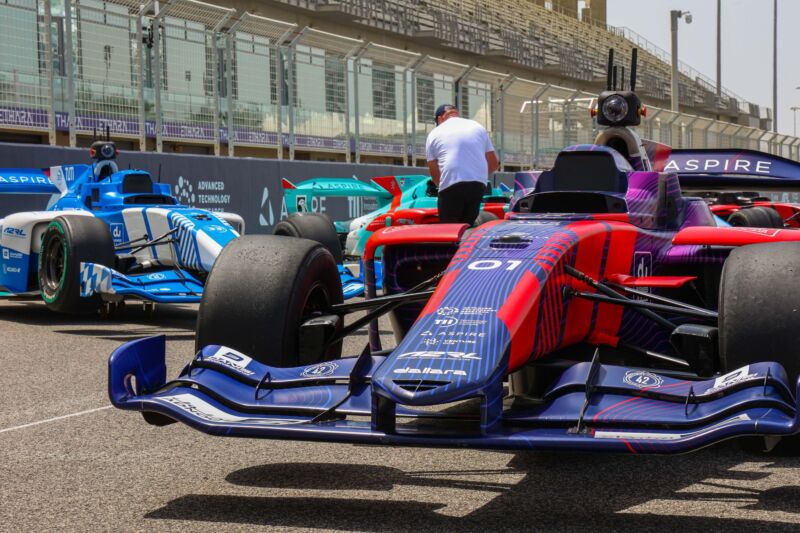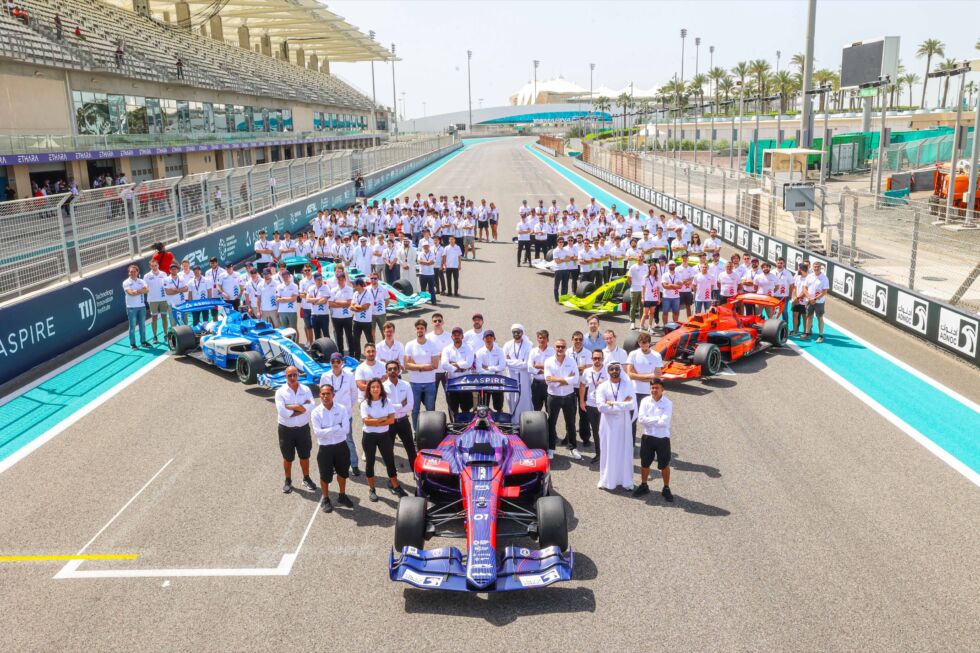people showed up to watch —
The Abu Dhabi Autonomous Racing League proves it’s possible, just very hard.

Enlarge / No one’s entirely sure if driverless racing will be any good to watch, but before we find that out, people have to actually develop driverless race cars. A2RL in Abu Dhabi is the latest step down that path.
A2RL
ABU DHABI—We live in a weird time for autonomous vehicles. Ambitions come and go, but genuinely autonomous cars are further off than solid-state vehicle batteries. Part of the problem with developing autonomous cars is that teaching road cars to take risks is unacceptable.
A race track, though, is a decent place to potentially crash a car. You can take risks there, with every brutal crunch becoming a learning exercise. (You’d be hard-pressed to find a top racing driver without a few wrecks smoldering in their junior career records.)
That’s why 10,000 people descended on the Yas Marina race track in Abu Dhabi to watch the first four-car driverless race.
Test lab
The organizers of the Abu Dhabi Autonomous Racing League (A2RL) event didn’t brief me on what to expect, so I wasn’t sure if we would see much car movement. Not because the project was likely to fail—it certainly had a lot of hardware and software engineering behind it, not to mention plenty of money. But creating a high-speed, high-maneuverability vehicle that makes its own choices is an immense challenge.
Just running a Super Formula car—the chassis modified for the series—is a big task for any race team, even with an expert driver in the cockpit. I was ready to be impressed if teams got out of the pit lane without the engine stalling.
But the cars did run. Lap times weren’t close to those of a human driver or competitive across the field, but the cars did repeatedly negotiate the track. Not every car was able to do quick laps, but the ones that did looked like actual race cars being driven on a race track. Even the size of the crashes showed that the teams were finding the confidence to begin pushing limits.

Enlarge / Each of these Dallara Super Formula cars has been modified by its team to operate without a human driver onboard or in control.
A2RL
Is it the future of motorsport? Probably not. But it was an interesting test lab. After a year of development, six weeks of code-jam crunch, 14 days of practice, and one event, teams are going home with suitcases full of data and lessons they can use next year.
The track and the cars
A2RL is one of three competitions being run by Aspire, the “technology transition pillar” of Abu Dhabi’s Advanced Technology Research Council.
Yas is an artificial island built as a leisure attraction, housing theme parks and hotels alongside the circuit, with an influencer photo opportunity around every corner. The island was the focus of the Emirate restyling itself for tourism, and its facilities now play secondary host to another image makeover as a technology hub. An F1 track is now finding a second use as a testing lab, and it’s probably the only track in the region that could afford the kind of excess that two weeks of round-the-clock, floodlit, robotic testing represents.
Although the early ambition was to use Formula 1 cars to reflect Yas Marina’s purpose as a circuit, the cost compared to a Super Formula car was absurd. Plus, it would have required eight identical F1 chassis. Even in the days of unrestricted F1 budgets, few teams could afford that many chassis in a season.
So Aspire’s Technology Innovation Institute (TII) went to the manufacturer Dallara, which supplies almost every high-level single-seater chassis, including parts of some F1 cars, but also every IndyCar, Super Formula, Formula E, Formula 2, and Formula 3 car, plus a whole array of endurance prototypes. Dallara was also involved in the 2021 Indy Autonomous Challenge via the IndyNXT chassis.
TII in Abu Dhabi was also involved in the Indy Autonomous Challenge as part of a university’s team, so it got to see how the cars had been rapidly adapted to accommodate a robotic “driver.”
-
The computer that controls the driving and interprets the sensor stack, situated in the cockpit—almost like a human driver.
Hazel Southwell
-
The Meccanica42 actuators that operate throttle, brake, and steering onboard the adjusted SF23 chassis.
Hazel Southwell
-
L-R: The robotic array that sits lower in the car’s cockpit for the actuators to operate the car, and the computer that sits above it for maximum ventilation.
Hazel Southwell
-
A look at one of the car’s sensor pods.
A2RL